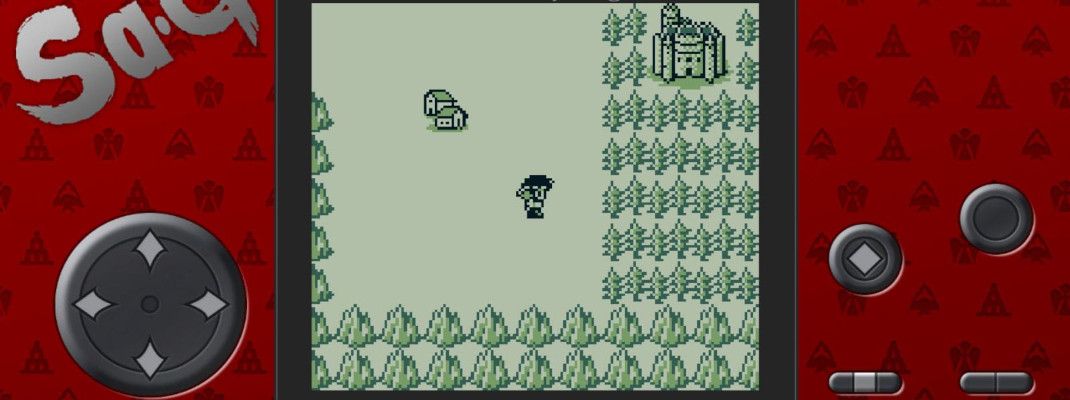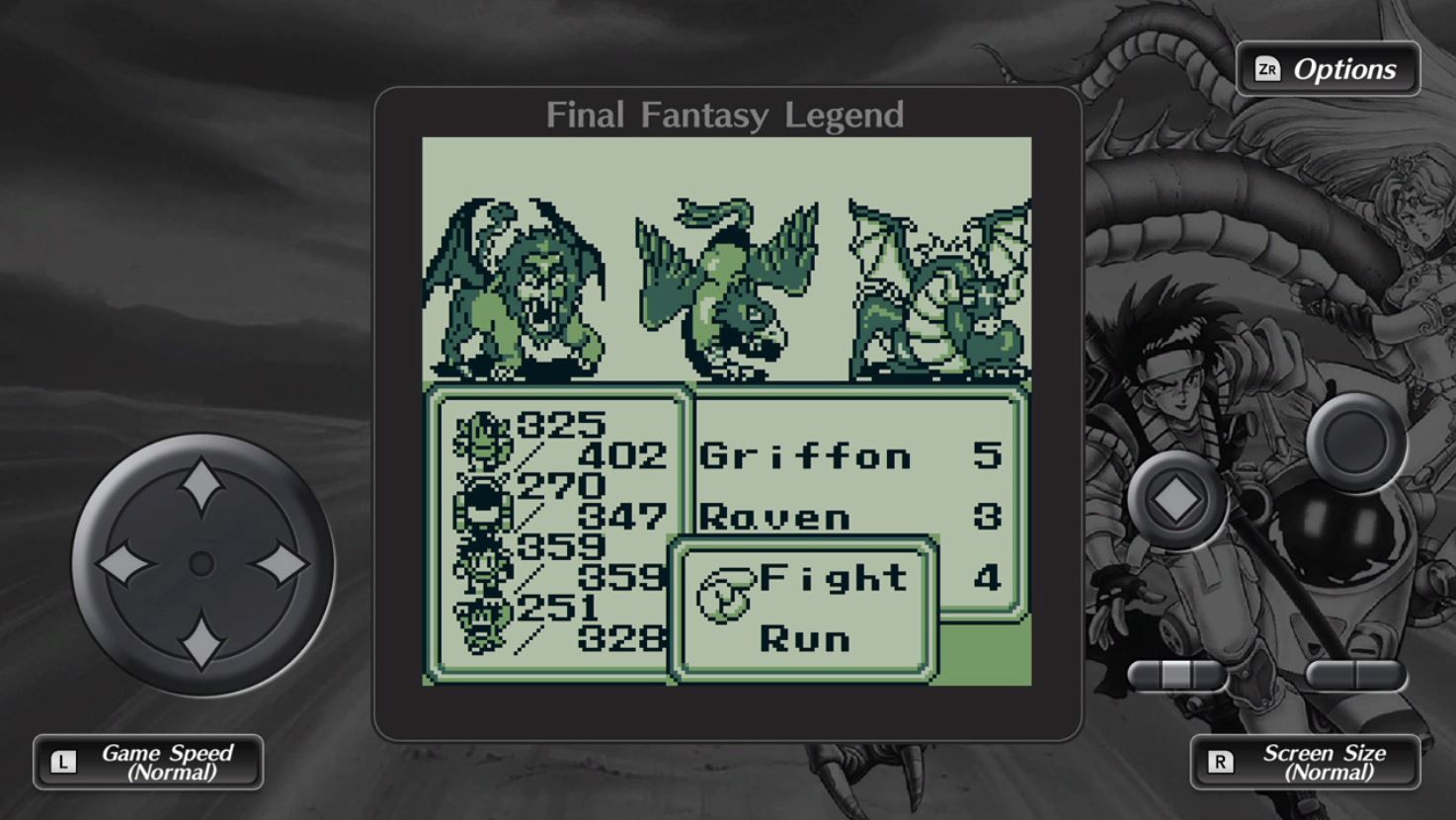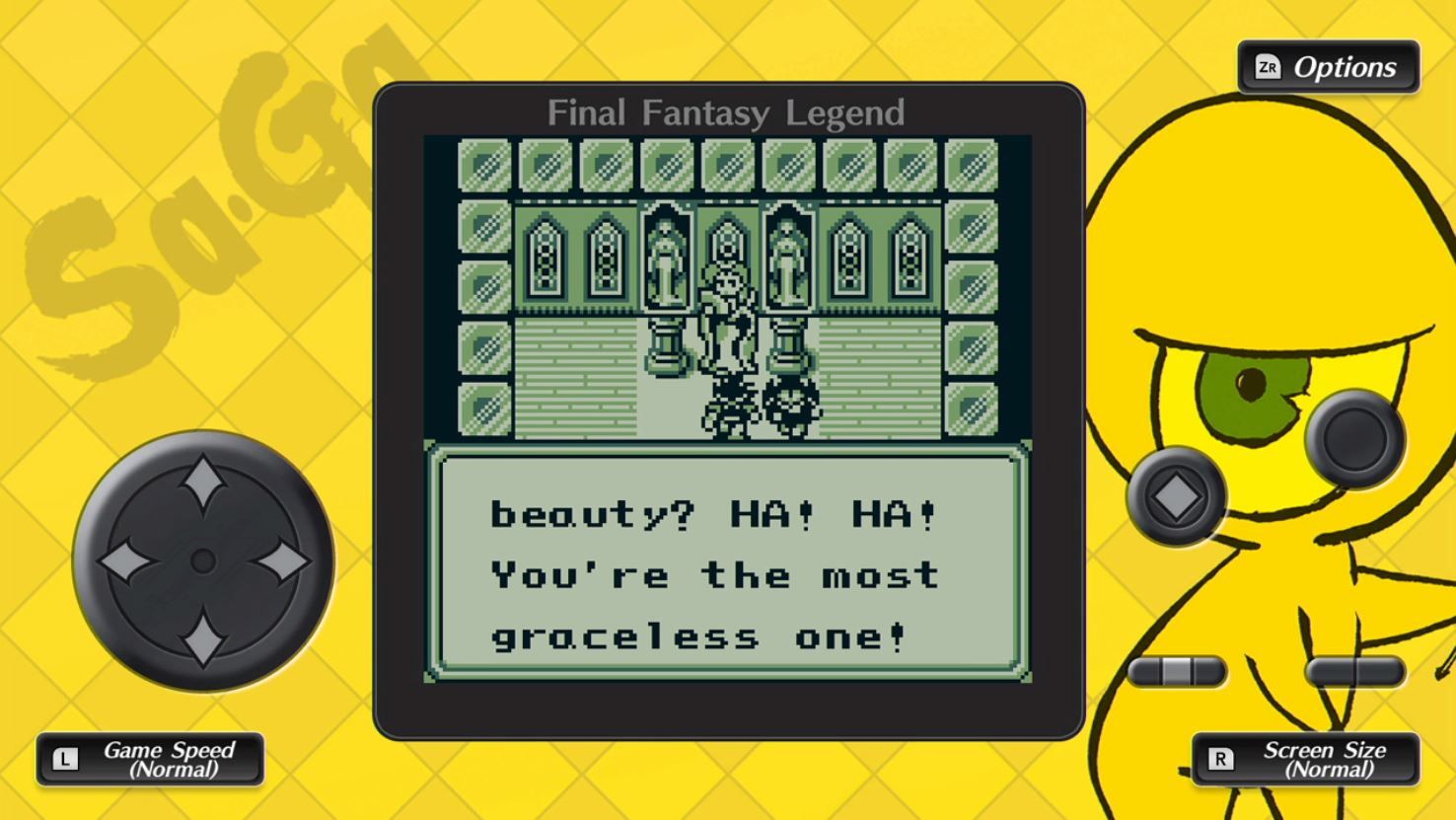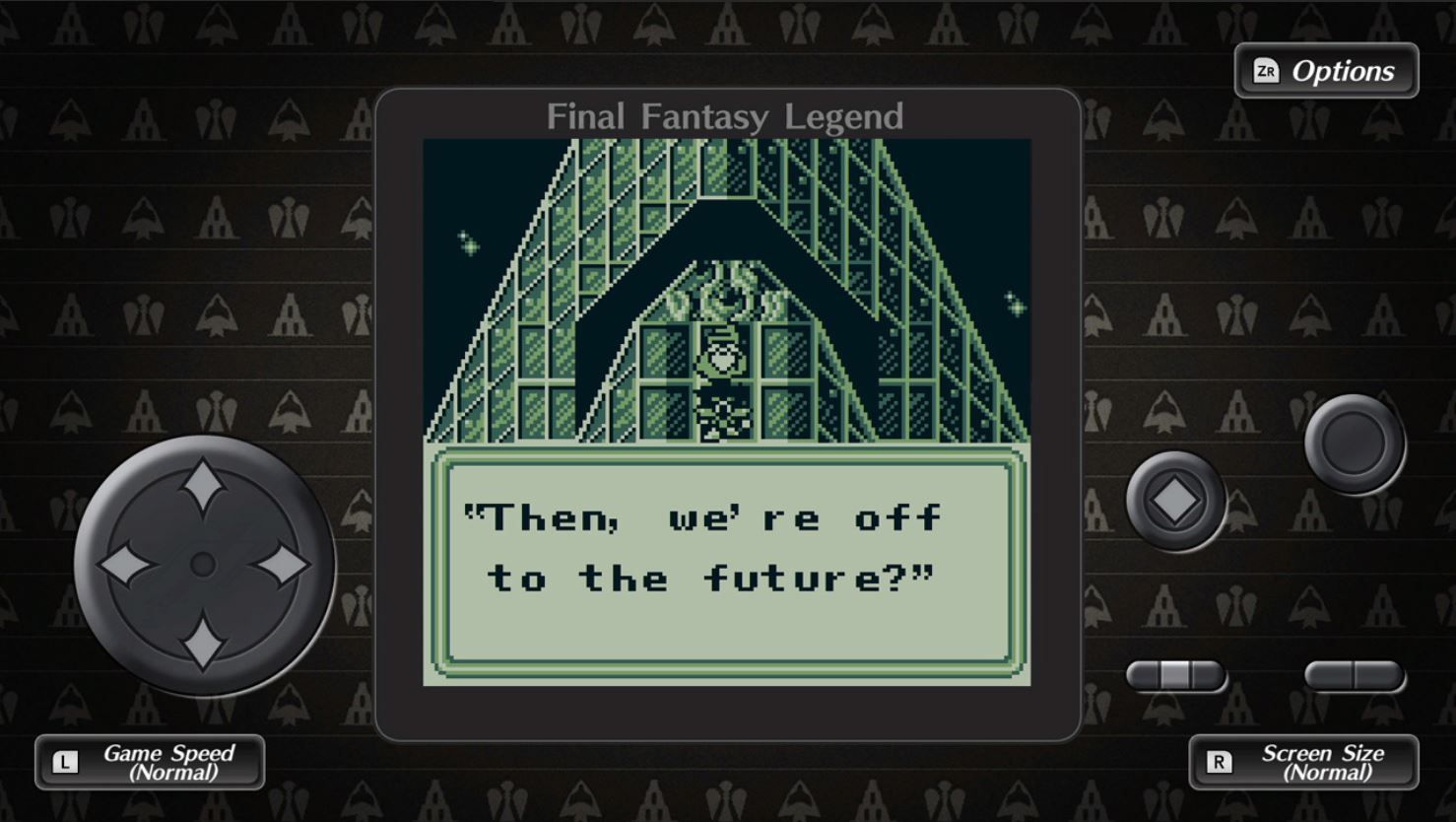SaGa Frontier was the first title in the SaGa series to brandish the name to American audiences in 1998, but SaGa games had been available for almost a decade prior. In 1990 the first SaGa game was released on Game Boy under the name The Final Fantasy Legend, hoping to increase sales by associating it with the NES title. There are distinct differences between Final Fantasy and SaGa, but they're similar enough where in the days before internet and JRPGs not being nearly as common as they are now, the ploy seemed successful and two more SaGa sequels were released for Game Boy: Final Fantasy Legend II and Final Fantasy Legend III. In recent years the 16-bit era SaGa games were localized for modern platforms and following suit the first three games have been rounded up for Switch in Collection of SaGa Final Fantasy Legend.
The three games are faithful ports of the original Game Boy titles with modern quality of life changes. There's an option to switch between playing the games are their normal speed or a sped-up version, as well as one to play with a normal-sized game window or a slightly larger one. Touchscreen controls are implemented that allows for a more retro Game Boy feel. They don't add much to experience, but different borders can be selected, giving an effect akin to putting stickers over the Game Boy that were popular ages ago when the black and white system reigned supreme in the handheld market.
These early SaGa games gained a lot of attention through the Final Fantasy rebranding. Now that both series are established in their own right the differences between the two are rather apparent, but back in 1990 when Final Fantasy was a surprise hit they were similar enough where most people probably bought The Final Fantasy Legend just on its name alone and accepted it as being somewhat related, even though there are unconventional RPG elements of SaGa games that made their introduction here. In The Final Fantasy Legend, players create a party composed of humans, mutants or monsters. No one gains experience points or has levels; instead party members advance through different ways.
Humans purchase strength, hit point and agility upgrades from item shops. Mutants have limited equipment space because they get random spell abilities that come and go and game attribute increases seemingly randomly during battles. Monsters change into different monsters by eating what's dropped by other monsters, and while there's some rhyme and reason to this a lot of it seems random and unpredictable and some transformations are not improvements. Also, weapons have limited durability. Monsters recover their weapon uses and mutants recover spell uses by sleeping at a inns, but mutant and human weapons have to be repeatedly purchased with extras kept on hand. The system of advancement changes in the two sequels, but the general unconventional approach remains as a template.
The Final Fantasy Legend is divided into four different worlds that are accessed through a tower, which are the World of Continent, World of Ocean, World of Sky and World of Ruin. Each world has a primary objective, and once that's completed the player will acquire the means to access the next section of the tower. The objectives aren't always clearly spelled out but talking to NPCs in towns can help point the player in the right direction. The game itself isn't too difficult, but the unclear direction and limited inventory space artificially increase the challenge, especially with limited weapon usage. The random advancement of mutants with their changing spell access and evolution of monsters can also make things more difficult. The story also doesn't become clear until later in the game. The Final Fantasy Legend is a relatively short game and only takes about ten hours to complete and despite it aging the worst out of the titles on this collection, is still fun. There's a huge difficulty spike at the final boss, but there's one specific weapon that can make short work of it if the player isn't concerned about an epic or heroic battle.
Final Fantasy Legend II is arguably the best game in this collection. Compared to its predecessor there's more emphasis on the story from the beginning and feels more like the story-driven JRPGs we've all grown to know and love over the years. This is a quest where after the player selects their main character and party members they need to venture off on a quest to recover 77 Magi. The gameplay remains largely similar to its predecessor, but it's as if the developers looked at everything that wasn't great about the first game and tried to improve it. The story is more fleshed out for one and progressing through the game is a lot easier. Early 90s RPGs didn't exactly hold the player's hand after the first few introductory missions but the storytelling and NPC dialogue makes progressing through this title a lot clearer than the first one. Leveling up characters is still not an exact science, but overall this is a more much streamlined game than The Final Fantasy Legend.
Final Fantasy Legend III is one of the stranger entries in this collection, and depending on who is playing may consider it their favorite or too bizarre. Mixing high fantasy and technology isn't a new concept to any Final Fantasy game, whether it's a proper Final Fantasy title or one that simply borrows the name for marketability. Final Fantasy Legend III goes more into the sci-fi direction than the first two which seems like a jarring contrast, and while the greatest game of all time is about time travel, it seems off in this entry. The player needs to outfit their time-traveling ship Talon to travel through time to defeat a grand evil. The joining of temporary party members is a feature that ended up being common in JRPGs and the advancement system of characters is showing evolution of the system from the first two games. Human characters level up through experience, mutants increase abilities by using them in battle. Both can either attach pieces of technology to become cyborgs or eat monster meat to transform. Objectively speaking it's an advancement over the first two, but whether it's a ratio of steps forward and back is up to the individual's player's interpretation. Additionally, the ability to jump was added to this entry and randomly jumping in games can be generally fun.
Closing Comments:
Collection of SaGa Final Fantasy Legend is obviously directed to either SaGa historians or people looking for an RPG nostalgia fix. The collection provides around forty hours of gameplay to complete and does a good job of scratching the nostalgia itch. This collection is a fine example of how games were enjoyable with limited technology and rather simple gameplay, but the limitations are even more apparent now and makes the player appreciate how far modern games have come with storytelling and clearly laying out objectives. But even with all the limitations of the time aside, which can sometimes make the games frustrating, this is a nice collection to take a trip down memory line or discover the origins of SaGa.




